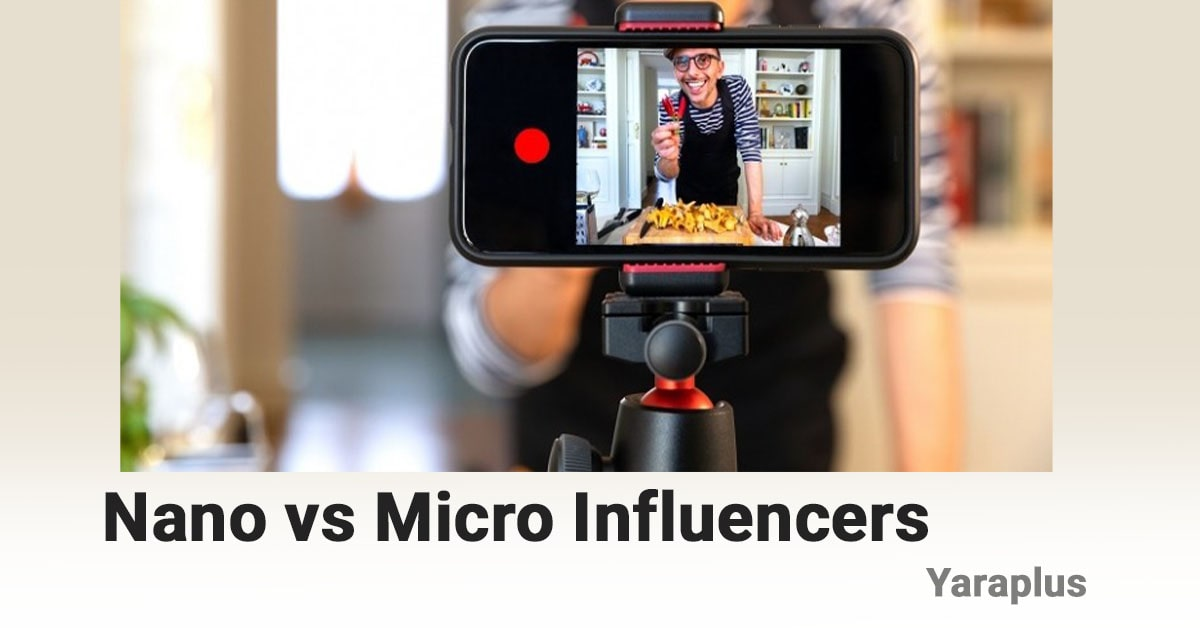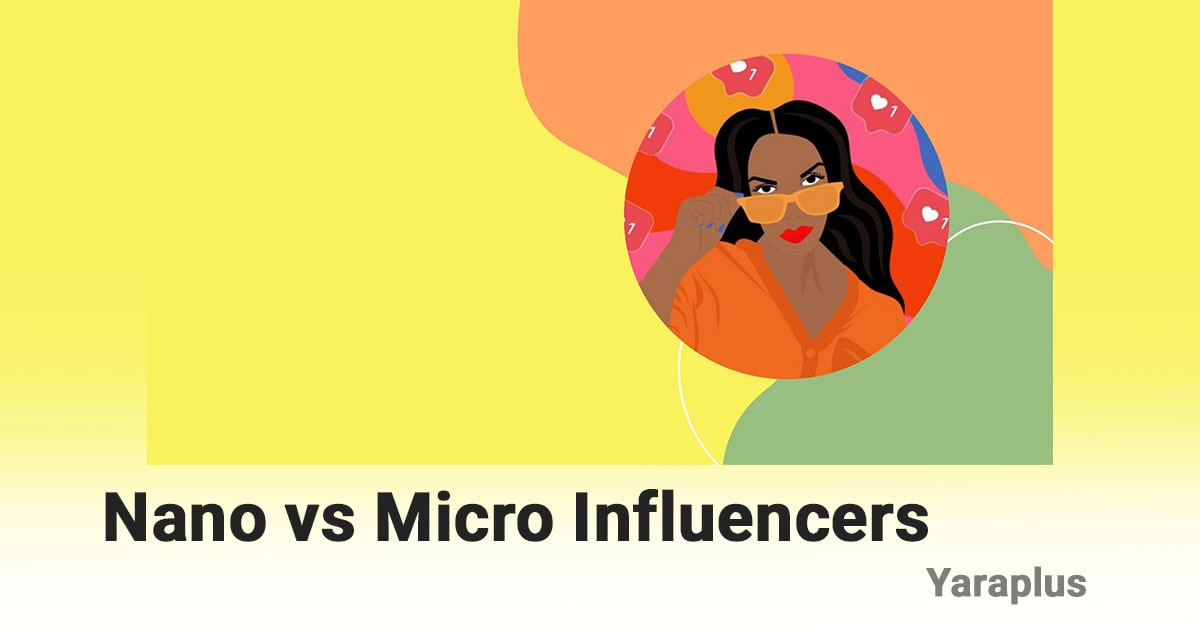Nano vs Micro Influencers
Table of contents
- What are Nano Influencers?
- Characteristics
- What are Micro-Influencers?
- Characteristics
- Key Differences Between Nano and Micro-Influencers
- Advantages of Nano Influencers
- Advantages of Micro-Influencers
- When to Choose Nano Influencers for Your Campaign?
- Niche Products or Services:
- Tight Marketing Budgets:
- Focus on High Engagement and Personal Recommendations:
- When to Choose Micro-Influencers for Your Campaign?
- Broader Target Audience:
- Aim to Scale the Brand's Visibility:
- Midsize Marketing Budgets:
If you're an aspiring brand or influencer, you might be wondering: How do I effectively market my products in a crowded online world?
The answer might just lie in collaborating with the right influencers. But here’s the catch—it's not about the size of the following, but how connected and engaged they are with their audience. Let's dive into the world of nano and micro-influencers and explore why they might be the secret ingredient for your next successful campaign.
What are Nano Influencers?
Definition
Think of a nano influencer as the 'friend' in your social media circle, someone with a small but highly engaged group of followers. We're talking about accounts with anywhere between 1,000 and 10,000 followers, who might feel more approachable and relatable than a celebrity endorsement.
Characteristics
- Highly engaged audiences: What makes nano influencers stand out? It’s the level of engagement. Unlike big names with millions of followers, nano influencers have smaller, more intimate communities. Their followers often feel like they are part of an ongoing conversation, which builds trust over time. It’s like asking your friends for a product recommendation—they're more likely to trust you than an unknown celebrity.
- Authenticity: Nano-influencers are not as popular as celebrities hence their suggestions are most likely to be perceived as real suggestions.
- Niche focus: Nano-influencers mainly target specific groups and usually are niche-oriented, therefore they are great for niche marketing.
What are Micro-Influencers?
Definition
Now, micro-influencers are a step up. They have between 10,000 and 100,000 followers, which might sound like a lot, but the beauty of their influence lies in their niche focus. These influencers tend to have a special connection with their audience, making them perfect for brands looking to reach a broader, but still engaged, crowd.
Characteristics
- Larger audience, still engaged: Despite having a bigger following than nano-influencers, micro-influencers are known to have high levels of interaction with customers. As mentioned before they are more common in popular culture but are not as distant as some others on this list.
- Expertise in niches: Hence the micro-influencers on most occasions possess specific knowledge within specific niches, for instance, fashion, fitness, or travel where the followers regard them as experts.
- Influence and credibility: These are as follows Despite this, micro-influencers have earned trust and reliability over some time making them influential in communicating brand messages to this larger but well-defined audience.
Key Differences Between Nano and Micro-Influencers

Let’s compare these two categories with some important metrics:
- Audience Size:
- Nano-influencers: So, what’s the main difference between nano and micro-influencers? Let’s break it down. Nano-influencers usually have thousands to tens of thousands of followers—tight-knit, highly engaged, and very niche-focused. On the other hand, micro-influencers have a broader following, with 10,000 to 100,000 followers, but their audience still feels like part of a community.
- Micro-influencers: Followed by 5,000 to 50,000 other people and can follow 5,000 to 50,000 blogs. However, they are not as specific as nano-influencers, even though they are in a relatively small bracket regarding followers and engagement.
- Engagement Rates:
- Nano-influencers: Tend to have higher engagement rates than micro-influencers usually being above 7-10%. Because of having fewer followers, they can easily engage with their fans, thus yielding a better fan-favorite feeling.
- Micro-influencers: They also encourage good engagement but, their engagement rates may be slightly low, acquiring an approximate average range of 3%-7%. Still, they do not seem to lose deeply engaged followers compared to bigger influencers.”
- Authenticity and Trust:
- Nano-influencers: Also considered more credible and interesting to the audience by the followers since they are more likely to interconnect with the audience. This removes the perception that is associated with celebrity contacts, which leads to an improvement in trust.
- Micro-influencers: They also have a good level of trust and authenticity, and often are considered to be slightly more commercial than Nano-influencers because of their bigger follower count. However, many still retain this family feel of the community in that people in them know each other.
- Cost:
- Nano-influencers: Usually brands prefer them as these bloggers can accept free products or work for a lesser amount of money. They can cost from $0 to a few hundred dollars depending on an influencer’s level of engagement and the niche.
- Micro-influencers: Tend to charge their clients higher fees than Nano-influencers but are still pocket-friendly compared to macro and celebrity influencers. The cost of collaborations usually varies; it may cost as low as a few hundred dollars or even as high as several thousand dollars.
All in all, brands should consider certain aspects in differentiating between the two to ensure you get the right type of influencer for your brand ad campaign.
Advantages of Nano Influencers
- Nano influencers might not have millions of followers, but they’ve got something even more powerful—credibility. Their smaller, but dedicated audience trusts them more than a big-name influencer because they interact with them on a personal level. It’s like getting advice from a close friend who knows you well.
- Moreover, Nano-influencers are usually close with their audience, which replies and chats and develops unique posts according to personal tastes and preferences. The key is that this approach allows creating a sense of community which is still a much more effective way to engage the audience compared to promoting via just big social media influencers. People who follow them feel appreciated and engaged which makes the audience more loyal and attentive to their content.
- Finally, collaborating with Nano-influencers is particularly favorable for small businesses and niche brands since it can be extremely cheap. Some of the Nano-influencers may agree on working for product exchanges or working for very little amount of money, thus making influencer marketing can be implemented by most brands with small marketing budgets. This results in a sided step of targeting unique markets instead of just flooding the market with similar or related products and thus a higher return on investment (ROI). Therefore, Nano-influencers work for businesses because they offer genuine engagement, real audience interactions, and affordable advertising tactics.
Buy Telegram Ads ✔️ Fast & Instant
Advantages of Micro-Influencers
- Micro-influencers are somewhere in between—big enough to have a broad reach, but small enough to still maintain that personal touch. With followers ranging from 10,000 to 100,000, these influencers are a great middle ground if you're looking to reach a wider audience without losing that personal connection.
- It is especially extremely helpful for brands who are seeking to expand their marketing business. Another advantage is that micro-influencers usually have well-stipulated areas of specialty, and therefore enable brands to better target groups of people or certain interests. They can develop content that caters to their customers, hence leading to more conversions than a campaign with a wider, but not specific market. Secondly, it doesn’t make followers feel that these personalities are paid to endorse the product and therefore their endorsement is more believable.
- Additionally, micro-influencers are slightly cheaper than macro-influencers, and therefore brands could work with many of such influencers at ago. This enables brands to develop various ways of reaching out to individuals within the various target market segments hence improving the efficiency of the campaigns. Thus, micro-influencers are even more effective at reaching more people with a higher engagement rate, better targeting, and lower price, which influences brands that strive to improve their market presence.
When to Choose Nano Influencers for Your Campaign?
You might want to know When Should You Use Nano Influencers for Your Marketing Strategy.
Niche Products or Services:
Nano influencers primarily work with a more targeted, yet more loyal audience audience with an interest in related niches. Given that your product is specialized for a specific group, the mentioned influencers can help you reach and engage your audience.
Tight Marketing Budgets:
Nano influencers may also be relatively inexpensive compared to the normal influencer’s fees. It also means that brands with relatively smaller budgets can afford to strike multiple deals which is a plus.
Focus on High Engagement and Personal Recommendations:
However, it has been discovered that Nano influencers are more loyal to their audiences and hence engage them more openly. It can be noted that the recommendations they give are more relatable than sponsored content hence meaning their influence over the followers’ purchase decisions is considerably higher.
When to Choose Micro-Influencers for Your Campaign?
If you want to choose between Micro-influencers and Nano influencers, you should know that:
Broader Target Audience:
Micro-influencers receive significantly more likes than Nano influencers and are perfect for brands that want to reach as many consumers as possible but in a far more targeted manner.
Aim to Scale the Brand's Visibility:
If your goal is to build brand recognition and visibility on a slightly grander level, micro-influencers make this possible since, although they have a somewhat bigger following than Nano influencers, they continue to create that close-knit, friendly relationship.
Midsize Marketing Budgets:
The good thing with micro-influencers is that they are fairly affordable, especially for brands that are willing to sink a lot of cash but are not yet ready to go with the big names of macro or mega influencers.
Ultimately, the choice between nano and micro-influencers comes down to your goals—whether you're aiming for deep, niche engagement or broader visibility. Whichever path you choose, the key is to find influencers who genuinely connect with their audience. So, are you ready to find the right influencer for your brand? Start thinking about what matters most to your campaign and go for it!
Next read: What is a Lifestyle Influencer?
We suggest you read these articles as well
Submit an opinion



